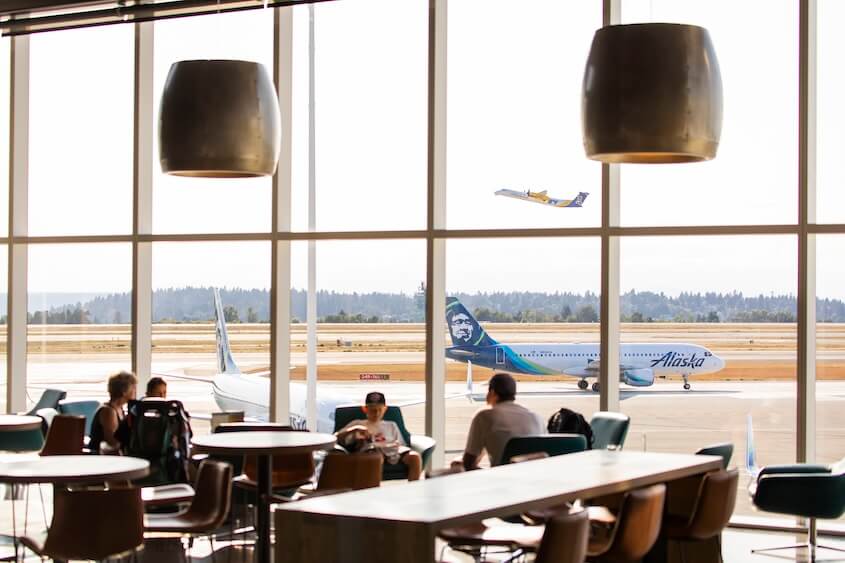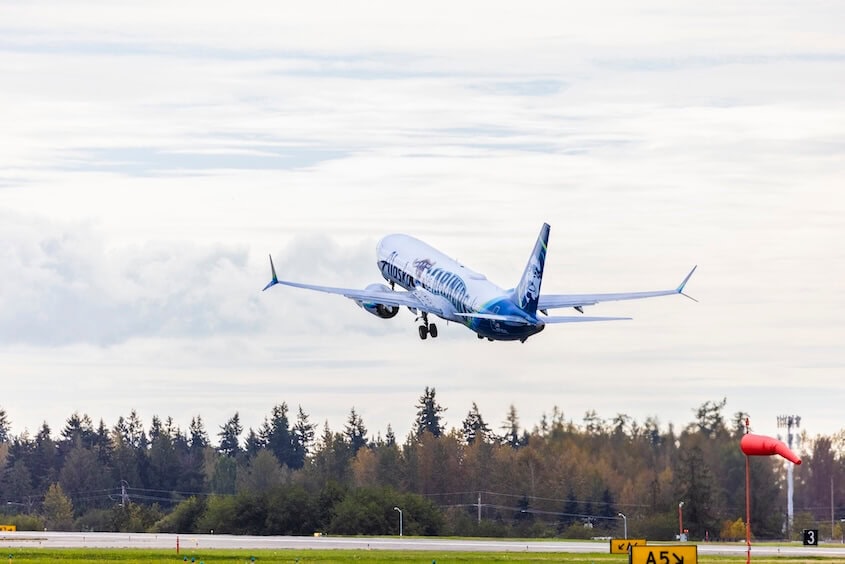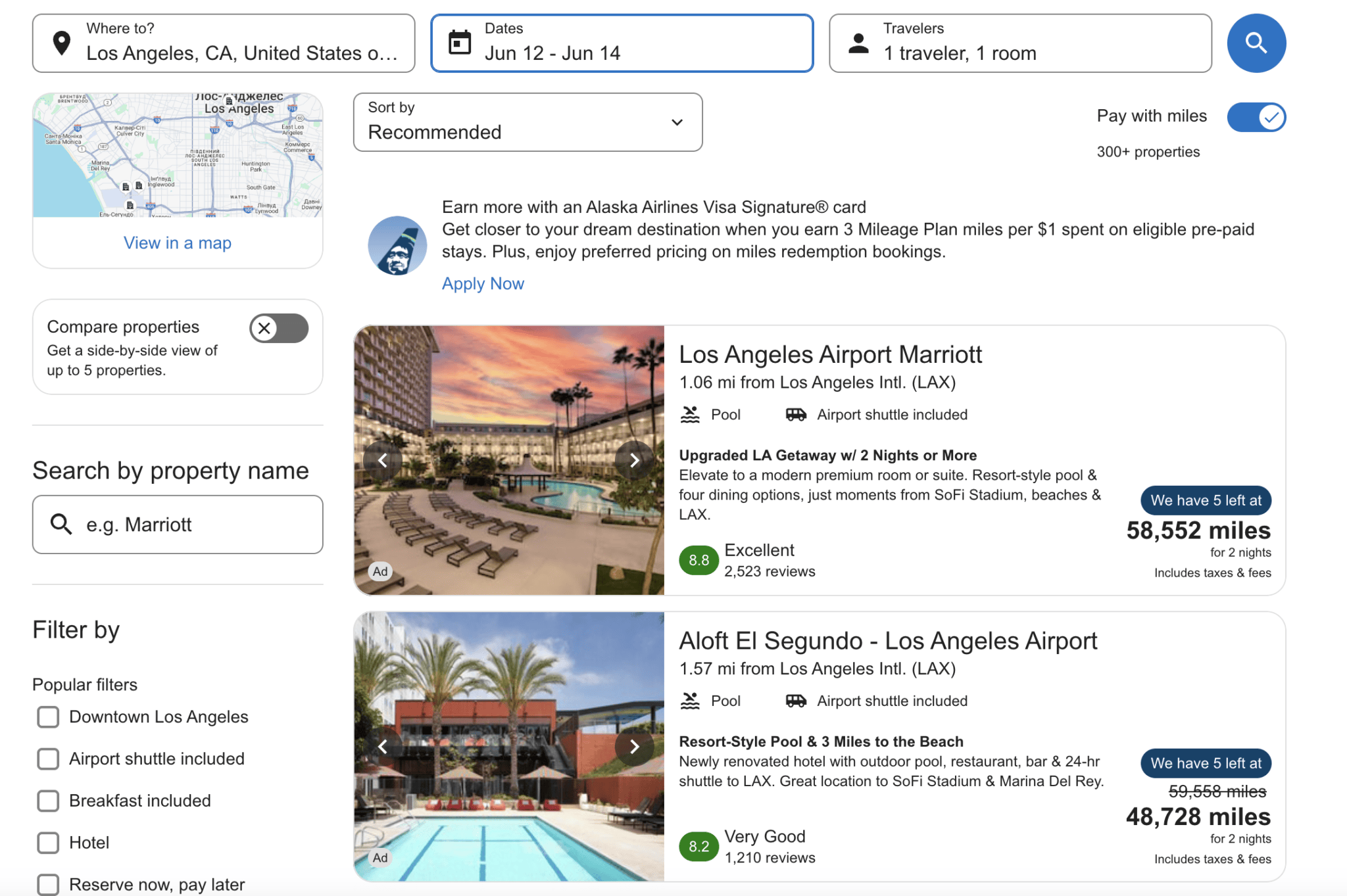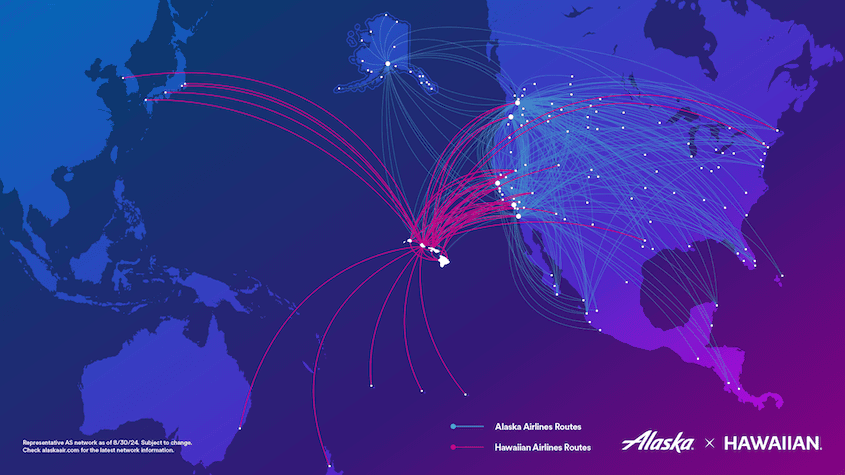The Art of Using Alaska Miles (Smart Strategies)
PointsCrowd is a community-supported platform. When you apply for a credit card, make an order, or otherwise interact with the advertisers through the links on this page we may earn an affiliate commission. This helps us maintain and develop the platform further at no cost to you.
Note: Due to the merger of Alaska Airlines and Hawaiian Airlines, a new joint loyalty program called Atmos Rewards has been launched, and all existing Mileage Plan and HawaiianMiles members will be automatically transitioned to this unified program.
To better understand these changes and how they affect your travel rewards, check out these related articles:
In this article, we will look at smart strategies for redeeming, using Alaska miles—from booking award flights (the primary and often best use) to using miles to pay for hotels, upgrade service, access lounges, partner services, and even the latest 2025 promotions.
Understanding Alaska Mileage Plan Value and Updates

Alaska’s Mileage Plan program is often ranked among the most rewarding airline loyalty programs. According to analysts, Alaska miles are worth an average of about 1.1–1.3 cents each.
And with strategic use (such as for premium flights on partner airlines), you can get much more value, over 2.1 cents, demonstrating just how powerful Alaska miles can be.
One of the unique features of the Mileage Plan is its partnerships: since joining the Oneworld alliance in 2021, Alaska miles can be used on flights with more than 20 partner airlines to reach over 1,000 destinations worldwide.
Alaska also has partnerships with non-alliance airlines (such as Korean Air, Singapore Airlines, and Starlux).
The 2025 update has made some changes to the Mileage Plan program. In particular, Alaska is introducing new distance-based award charts to replace the old region- and airline-based charts. Longer flights cost more miles, and some short flights have become cheaper. Some previous “great deals” have become more expensive, but new opportunities have emerged (for example, some short flights with partners in Asia have become significantly cheaper, from 65,000 to 15,000 miles one way).
Another interesting change coming in 2025 is the ability to book awards from multiple airlines, allowing you to combine several partner airlines on a single ticket — a flexibility that Mileage Plan previously lacked. Alaska has also introduced more ways to attract members: premium flights now earn miles that count toward elite status (EQM), and the new Mileage Plan Unlocked platform offers the ability to redeem miles for non-air services (more on that later).
Best Ways to Redeem Alaska Miles for Flights

Award flights are the most valuable and popular way to use Alaska miles. With an award flight on Alaska Airlines or its partners, you get free (or nearly free) travel in exchange for your miles, often providing much higher value per mile than other ways to use your miles.
Here’s how to get the most out of your miles on flights:
Alaska Airlines flights
You can redeem 5,000 to 15,000 miles for a one-way economy flight on Alaska and Hawaiian aircraft, depending on distance and demand.

For example, short flights along the West Coast can cost as little as 5,000 miles.
Booking is easy: log in to your Alaska Mileage Plan account, find your route and dates, then select “Use miles” to view available rewards.

If you don’t have enough miles to cover the full cost of your ticket, Alaska offers a “Cash & Miles” option that allows you to pay part of the fare with cash and part with miles.
This can be a good choice for first-time users of the program who have a small mileage balance but want to save $100–$200 on the cost of their ticket by using some of their miles.
Partner Airlines
You can use Mileage Plan miles on flights with Oneworld partners such as American Airlines, British Airways, Cathay Pacific, Japan Airlines, Qatar Airways, and others, as well as on flights with select non-alliance partners.
For example, 50,000 miles can buy you a Cathay Pacific business class ticket from the US to Asia – a flight lasting over 15 hours in a seat that reclines to a horizontal position. Premium first class tickets on the best airlines are even possible: about 70,000 miles was enough for a first class ticket on Cathay Pacific to Hong Kong, and for a similar amount you can purchase a first class ticket on Japan Airlines to Tokyo. These premium cabins, which often cost a lot in cash, provide exceptional value for your miles. (For comparison, using 70,000 miles for a ticket worth $5,000 in cash gives you ~7 cents per mile – significantly higher than the average of 1.3 cents!)
In order to redeem a ticket, it must be on the list of eligible flight numbers below. These flights must either be sold and operated by Alaska Airlines or sold by Alaska Airlines and operated by its partner airlines.
Alaska Airlines Partner Award Chart
From March 2024, partner short-haul economy flights (up to 700 miles) will continue to start from 4,500 miles one way.
This is a significant improvement on the previous minimum of 7,500 miles and ensures high availability of short flights with partners.



For more information on this, see on the Alaska website.
Two-Partner Award Tickets for Long-haul Routes

In 2025, Alaska Airlines introduced the option to use your Mileage Plan miles to purchase an award ticket that includes flights on two partner airlines. This means you can now combine multiple Oneworld partners in a single award ticket.
Currently, this does not work for all partners, but here are the ones that are supported:
- American Airlines + British Airways
- American Airlines + Finnair
- British Airways + Finnair
Alaska announces that more airline partners will be added to support a wider range of awards from multiple partners.
Stopovers = Two Trips in One
A unique Alaska award benefit, free stopovers. You can make one stop (up to 14 days) during your one-way trip – something almost unheard of in other programs. That means you can visit two destinations for the price of one. For example, you can fly from Los Angeles to Tokyo, stop in Tokyo for a week, and then continue on to Singapore, all on one ticket using the same miles as a direct LAX–Singapore flight. Alaska even allows two stops on round-trip tickets.
Always check each partner’s routing rules, but Alaska’s stopover policy is generally very generous.

Using miles for flights, especially on long-haul flights or flights with partner airlines, is usually the smartest strategy. You will typically get much more than 1 cent per mile on these rewards. Other ways to use miles (listed below) usually offer less value, but they have their place.
Other Ways to Use Alaska Miles (Besides Flights)
The Mileage Plan program offers many ways to use your miles without flying, from hotels and car rentals to charitable donations.
Here are the most common ways to use Alaska miles (along with their pros and cons):
Hotel stays

You can use your miles to book hotels and vacation rentals through Stays by Alaska Vacations, a portal powered by Expedia. This gives you access to over 900,000 properties worldwide, from large hotels to vacation rentals. However, the cost per mile is lower than for flights — in many cases, approximately 0.8–1.0 cents per mile. For example, a hotel reservation costing $1,563 could cost ~167,000 miles (≈0.93 cents/mile). Alaska credit card holders receive a small discount on miles (approximately 7% fewer miles, which increases the cost to ~1 cent per mile in one test).

If you have a large number of miles or really need to pay for accommodation, this is an option, but keep in mind that you will likely lose some of the value. Often, paying for the hotel in cash and saving your miles for flights is a better option.
One plus: you earn miles for paid stays (1 mile per $1 or 3 miles with an Alaska Visa card) when you book through the Alaska portal, so this can be a way to build up your account if you don’t use miles.
Car rentals
Alaska miles can be redeemed for car rentals. On the Alaska website, you can spend your miles on car rentals with partners such as Avis, Budget, Hertz, Alamo, National, and others.
The process is simple — select “Redeem Miles” on the car search page and book with your miles.
Renting a car with miles is usually valued at 0.86 cents per mile, which is even lower than hotels. For example, if a week’s car rental costs $300, you can spend around 35,000 miles on it (when those miles could be worth $400 or more in airfare).
In a pinch, it’s nice to have this option — just keep in mind the low conversion rate.
The recently launched partnership with Lyft does not allow you to directly redeem Alaska Mileage Plan miles for Lyft rides. The Alaska Airlines Mileage Plan program partners with Lyft to allow members to earn miles for rides, but not redeem them. Read more about earning miles here.
Transferring miles to others

Do you have friends or relatives who need miles? Alaska allows you to transfer miles to another person’s Mileage Plan account. However, this is expensive — $10 for every 1,000 miles transferred, plus $25 for processing each transaction. That’s effectively 1 cent per mile, which can negate the value of the miles transferred. For example, transferring 20,000 miles would cost $200 + $25 = $225 in fees — probably not worth it if those miles can only earn $226 (20,000 * ~$0.0113 each) in flights.
Instead of transferring, consider booking a ticket with your account’s bonus miles for your friend (Alaska allows you to book tickets with bonus miles for other people). This way, you’ll avoid transfer fees and still help them travel. Only use transfers when absolutely necessary (or if there is a rare promotion that waives fees).
Charitable donations (Care Miles)

One of the most rewarding uses for miles is to donate them. Alaska’s Care Miles program allows you to donate your miles to selected non-profit and charitable organizations. These organizations use donated miles to cover the costs of humanitarian missions, medical transportation, trips for sick children through the Make-A-Wish program, transportation for wounded veterans, and more. For example, you can donate miles to the Red Cross, Angel Flight West, Make-A-Wish, and other organizations. It’s easy — just select “Donate Miles” in your account and choose a charity. You won’t receive a direct cash reward, but your miles can make a real difference in someone’s life. If you have miles you won’t use, donating them can be a noble cause (and Alaska often holds a “Care Week” during which it doubles donated miles up to a certain amount, doubling your contribution).
Lounge membership (non-regular)
Alaska previously offered limited-time opportunities to redeem miles for Alaska Lounge membership (an annual pass for access to Alaska lounges at airports). For example, during a 2019 promotion, a non-elite member could spend 80,000 miles on a one-year lounge membership (valued at $450 cash). Top elite members could redeem 50,000 miles for the same membership (worth $300). That works out to about 0.6 cents per mile — not a great deal compared to redeeming for tickets. The Points Guy bluntly stated that this was a “terrible use” of Alaska miles, given their high value when exchanged for tickets. Starting in 2025, Alaska is raising its lounge prices and is not advertising the mileage exchange option (the 2019 promotion was temporary). It is better to pay with cash/credit card (especially if you have an Alaska Visa credit card, which gives an additional $100 discount on Lounge+ membership) or use a credit card that entitles you to lounge access.
Upgrading to first class
What about using miles to upgrade a paid ticket? Unfortunately, Alaska has discontinued the option to upgrade with miles. Previously, you could spend 15,000 miles to upgrade from economy to first class, but this option is no longer available as of 2023. Currently, upgrades on Alaska flights are free for elite passengers (depending on status and availability) or available for an additional fee (often offered 24 hours before departure for cash).
Mileage Plan Shopping Portal
Although the Alaska Mileage Plan Shopping Portal is most often used to earn miles, it also offers limited options for redeeming miles.
Alaska Mileage Plan offers the option to redeem miles for merchandise or gift cards through promotional partner programs or links from the Mileage Plan Shopping Portal.
- Gift card redemption (e.g., a $25 gift card for ~3,000–4,000 miles)
- Redemption for merchandise from specific retailers
- Limited-time offers that appear in your Mileage Plan account profile
The value of your Alaska miles is often reduced to 0.6–0.9 cents per mile.
Mileage Plan Unlocked
In 2024, Alaska launched Mileage Plan Unlocked, a platform that allows members to use miles for exclusive events, experiences, and auctions.
It’s similar to other airline programs — you can bid or exchange a fixed number of miles for things like concert tickets, sporting events, VIP packages, tours, food and wine tastings, and more.
For example, 10,000 miles for a VIP box at a WNBA game, including food and drinks. 32,000 miles for two VIP tickets to a Kylie Minogue concert in Seattle (miles can be a convenient currency for accessing tickets).
Transferring partner miles (Hawaiian Airlines)

As part of a new partnership, Alaska has teamed up with Hawaiian Airlines to allow 1:1 mileage transfers between Mileage Plan and HawaiianMiles. Starting in 2024–2025, members can link their accounts and freely transfer miles between the two programs at no cost. Learn more here.
For those who travel frequently to Hawaii, this partnership effectively expands the use of Alaska miles.
Tip: If you have Amex Membership Rewards points, you now have indirect access to Alaska miles (since Amex → Hawaiian is 1:1, and then Hawaiian → Alaska is 1:1). This option will be available until June 30, 2025.
Special offers: Global Getaways award sale
In 2023, the Alaska Mileage Plan introduced a quarterly award sale featuring select routes with reduced mileage fares.
For example, the Alaska Global Getaways program for summer 2025 included cities such as Lisbon, Bangkok, Naples, Buenos Aires, and more, with one-way economy tickets ranging from 20,000 to 30,000 miles instead of the usual 30,000–42,500 miles.

It is worth noting that taxes and fees are not reduced.
Conclusion
Regardless of your experience, there are a few golden rules. Plan big international rewards in advance — the number of rewards from partners may be limited, so start searching 9–11 months in advance if possible. Use tools such as the Alaska Rewards Calendar and set up alerts. Be flexible — if you can change your dates or route (e.g., transfer in another city or use a stopover), you may find seats that don’t show up in a simple search.
Don’t be afraid to use your miles — some people save them up, but remember that miles can lose value over time (changes to the chart, etc.), so it’s smarter to redeem them for a great trip in the near future rather than saving them forever. For experienced travelers, the strategy is often to wait for premium tickets in the premium cabin—use your miles where prices are highest to get the most value (e.g., international business class/first class flights or last-minute flights).
Happy travels, and enjoy every mile with Alaska Mileage Plan!